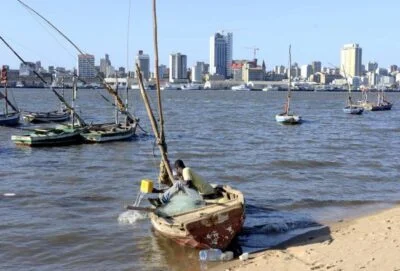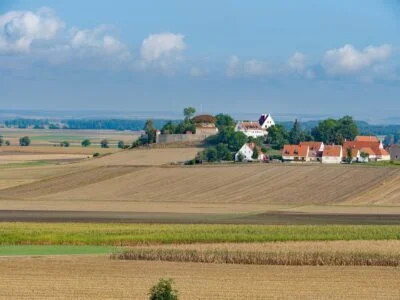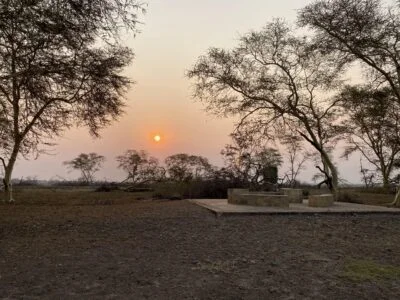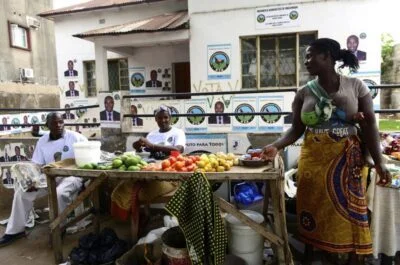OPINION – Gentrification and involuntary displacement: The nightmare for Africa’s urban poor
* Any views expressed in this opinion piece are those of the author and not of Thomson Reuters Foundation.
Growing socio-economic segregation in housing and urban space is leading to harmful disparities in African cities
Decades after gaining independence, many African cities have experienced an unprecedented urban transformation. From business centers to new residential neighborhoods, the landscape and structure of these urban areas is changing fast.
Maputo, the capital of Mozambique, offers a perfect example of rapid urban transformation in the last ten years. Like many other metropolitan areas in Africa, Maputo has become known for having a dual socio-spacial structure, where the unplanned neighborhoods called ‘subúrbios’ are encroached on by the formal, planned areas called ‘city cement.’
This dual structure dates from the colonial period, when the subúrbios were characterized by housing the poor and low-income national citizens, while the city cement areas were designated for privileged non-Africans and Europeans descended from colonialists. This systematic segregation continued through the post-colonial period, where arbitrary occupation and appropriation of housing infrastructure by elites during the nationalization excluded people outside of the inner circle of the military, war veterans, and higher-ranking government employees.
While the country enjoyed the early days of the post-colonial period, a civil war soon erupted and forced a migration of hundreds of thousands if not millions of people from rural to urban areas. With already limited housing availability relative to the urban population in Maputo, the subúrbios were the only housing alternative for the newcomers. This urban influx not only put pressure on the housing infrastructure, it also engendered an urban sprawl in areas previously zoned for the expansion of the formal city.
Four decades later, the dual socio-spacial structure is taking a different turn, this time a marked and driven duality that is forcing the displacement of long-time residents from the subúrbios to remote locations throughout the province. These emblematic and historic neighborhoods are gradually disappearing and being taken over by a modern urban infrastructure, including expensive private properties.
So, what is really happening?
Well, urban transformation and revitalization is not a new phenomenon in urban Africa and around the world. However, it becomes a concern when it leads to the displacement of low-income citizens and tears apart the community’s social fabric. Several studies have suggested that involuntary displacement is the negative impact of gentrification in such urban areas.
The gentrification and involuntary displacement in Maputo touches on a broader issue of land ownership and the bundle of legal rights of real estate.
While the nationalization of housing in Maputo was based on market fundamentalism, the nationalization of land remained state-driven, where the government claimed the sole right to buy and sell land across the country. Without a clear alignment between these two interconnected regulations, the entire process became fragile and leaves room for various interpretations.
This loophole within the legislative process not only disincentivizes property owners in the subúrbios from making substantive investments in their land, it also fuels informality within the housing market.
A longtime resident of the subúrbios and a taxi driver in the city cement, Mr. Matsinhe, is concerned with the local authorities’ lack of attention to this issue:
“For many years, the government has neglected public infrastructures and investments in the so-called ‘unplanned and informal neighborhoods,’ and, with fear of being evicted for not having a formal land documentation, people prefer to sell their homes to buyers that are offering significant amounts of money and additional incentives, ” he said.
“It is hard to reject an offer that apparently will change your life forever. Most of the buyers not only offer a price for the existing infrastructure, they also provide fully documented land in the newly designated habitational zones outside the city,” he added.
While this seems to be a good deal for the homeowners in the subúrbios, it comes with a long-term implication for the household livelihood.
The dwellers of the subúrbios play a fundamental role in the urban economy, particularly the informal economy. Most low-wage jobs in the city cement, including maids, restaurant servers, security guards, street cleaners, etc., are occupied by people living in the subúrbios. The relocation from inner-city to a remote area not only increases the cost of living, it also affects the household’s quality of life.
With basic services such as education, health, and employment located in the city cement areas, the newly relocated citizens are once again caught in this dualistic system that threatens the prosperity of the many generations ahead.
Meanwhile, the middle class and the elites are expanding their bargaining power in order to keep the city cement as a place for richer and higher-income households.
Mitigating the negative impacts of gentrification in Maputo would encompass a number of complex arrangements that require the commitment of policymakers, the private sector and the public in general.
Antonio Inguane is an international development specialist with Cadasta Foundation, he has extensive experience in land policy and resource rights.







